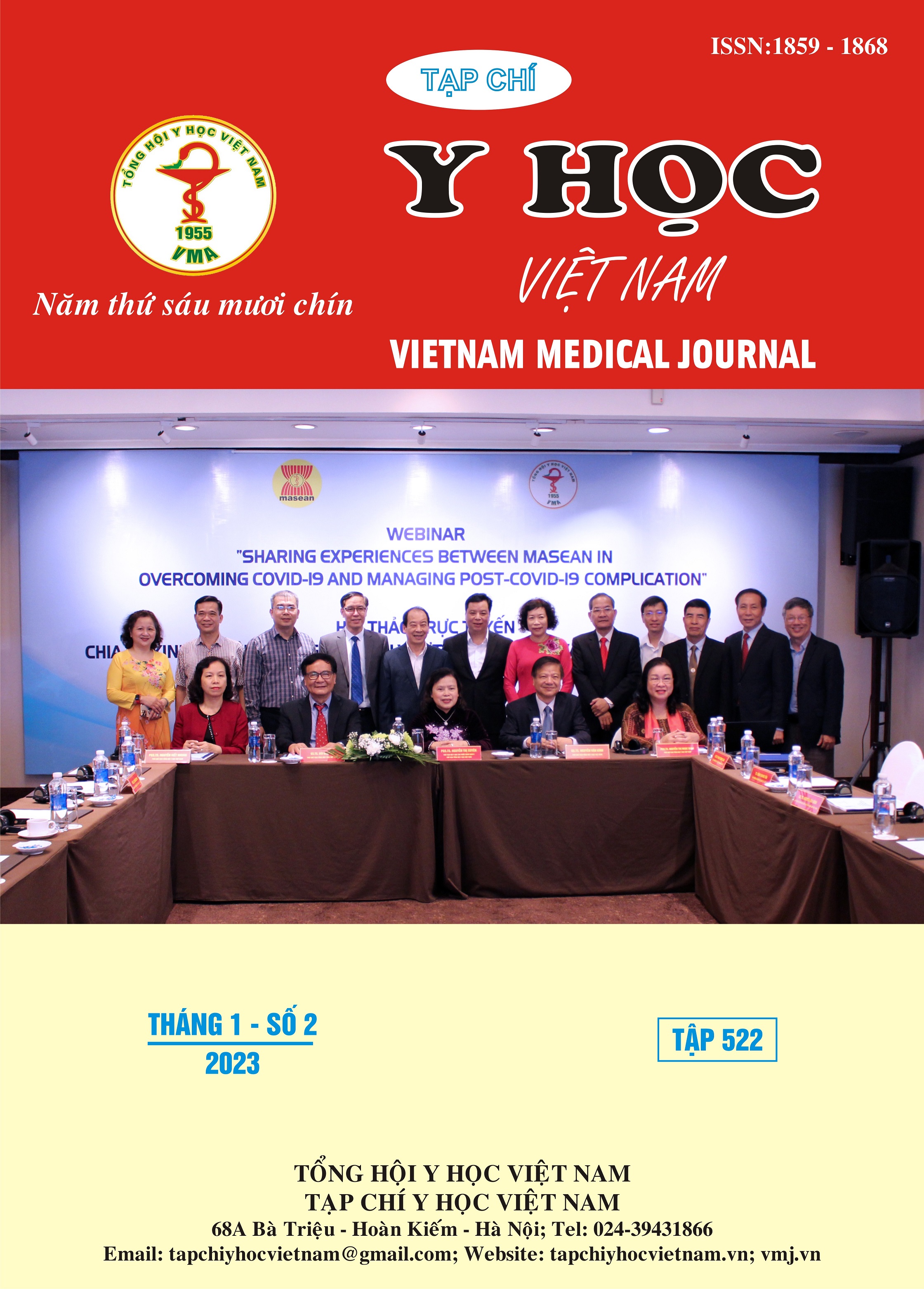EVALUATE THE EFFECTIVENESS OF SPIRONOLACTONE IN THE TREATMENT OF SERIOUS CENTRAL RELATIONSHIP
Main Article Content
Abstract
Objective: Evaluate the effectiveness of spironolactone in the treatment of central serous chorioretinopathy. Method: Prospective descriptive study on 44 eyes of 41 patients with serous central chorioretinopathy who were prescribed oral spironolactone at a dose of 50 mg/day for 12 weeks. from August 2021 to August 2022 at the Department of Ophthalmology - National Geriatric Hospital. Results: 44 diseased eyes of 41 patients diagnosed with serous central chorioretinopathy after 12 weeks of treatment all had a significant change in visual acuity compared to baseline, 47.7% had good vision improvement, 50% had improvement. average and only 1 eye, accounting for 2.3%, had no improvement in visual acuity. Anatomically, there was a marked change, after 12 weeks, the height of the subretinal fluid decreased from 242.82± 128.02 µm to 26.45± 48.57 µm, The number of eyes with subretinal fluid was reduced. complete resolution is 70.5%. The central retinal thickness decreased from 442,11 ± 129,69 µm initially to 257,18 ± 43,70 µm after 12 weeks of treatment. The area of the serous effusion decreased from 12.30 ± 6.92 mm2 initially to 1.25 ± 2.15 mm2 after 12 weeks and there were no cases of side effects. Conclusion: Spironolactone at a dose of 50 mg/day orally had a significant improvement in function and anatomy in the treatment of central serous chorioretinopathy. Spironolactone is a safe and effective choice for patients with central serous chorioretinopathy.
Article Details
Keywords
Central serous chorioretinopathy, spironolactone
References
2. Liew G., Q.G., Gillies M., et al., Central serous chorioretinopathy: a review of epidemiology and pathophysiology. Clin Exp Ophthalmol, 2013. 41(2): p p. 201-14.
3. Nicholson B., N.J., Forooghian F., et al., Central serous chorioretinopathy: update on pathophysiology and treatment. Surv Ophthalmol. , 2013. 58(2): p.: p. 103-26.
4. Yavas G.F., K.T., Kasikci M., et al. Obstructive sleep apnea in patients with central serous chorioretinopathy. Curr Eye Res, 2014. 39(1): p p. 88-92.
5. Bousquet, E., et al., Spironolactone For Nonresolving Central Serous Chorioretinopathy: A Randomized Controlled Crossover Study. . Retina (Philadelphia, Pa.) 2015. 35(12): p. 2505-2515.
6. Sun, X., et al., Spironolactone versus observation in the treatment of acute central serous chorioretinopathy. 2018. 102(8): p. 1060-1065.
7. Yavuz, S., et al., Investigating the efficacy and safety of oral spironolactone in patients with central serous chorioretinopathy. Journal Français d'Ophtalmologie, 2021. 44(1): p. 13-23.
8. Sinawat, S., et al., Oral Spironolactone versus Conservative Treatment for Non-Resolving Central Serous Chorioretinopathy in Real-Life Practice. Clin Ophthalmol, 2020. 14: p. 1725-1734.


